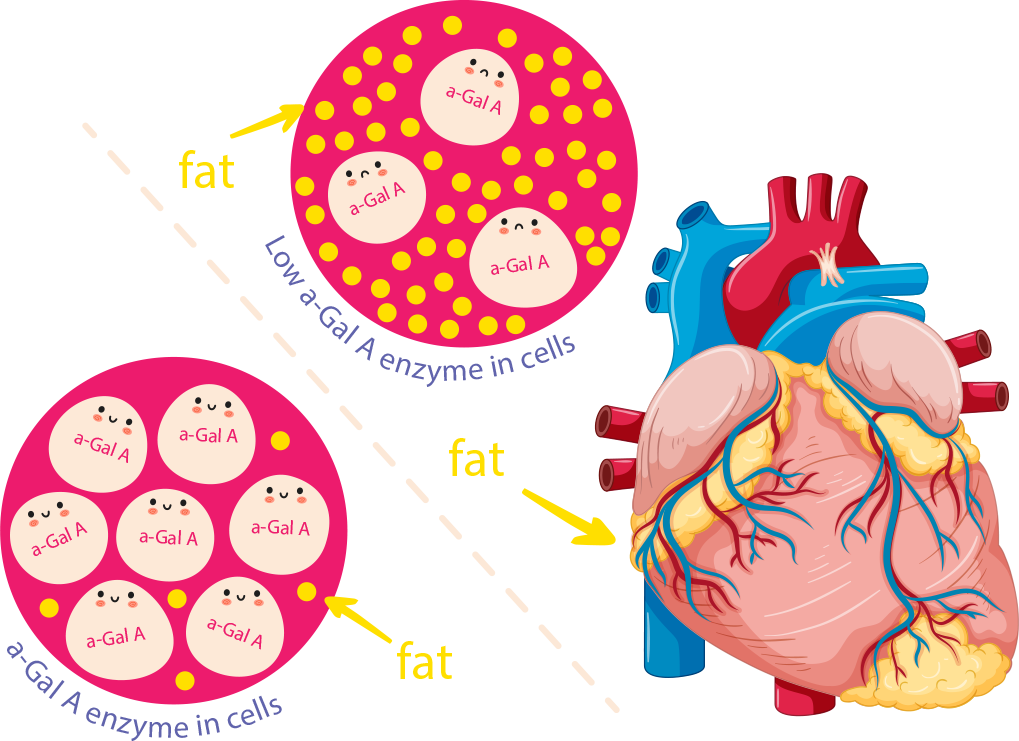NUHS Institutions will NEVER ask you to transfer money or disclose bank details over a call.
If in doubt, call the 24/7 ScamShield helpline at 1799, or visit the ScamShield website at www.scamshield.gov.sg.
Fabry Disease, also known as 'alpha-galactosidase-A deficiency', is a rare genetic disorder caused by a lack of the enzyme alpha-galactosidase-A. This enzyme is crucial for breaking down fatty material in our body, called sphingolipids. Due to the deficiency, this fatty material accumulates in the blood vessels and organs, leading to organ dysfunction.
This condition is inherited through a mutated gene on the X-chromosome (sex chromosome). Men have only 1 copy of the X-chromosome, while women have 2 copies of the X-chromosome, which explains why men typically experience earlier and more severe symptoms than women.

Symptoms of Fabry Disease vary, with some appearing later in life. Many symptoms are also non-specific which results in late diagnosis.
Symptoms include:
Diagnosing Fabry Disease requires a high degree of clinical suspicion. For men, a blood test measuring alpha-galactosidase-A levels can confirm diagnosis. Genetic testing for the specific X-chromosome gene mutation can also aid in diagnosis.
The aim of Fabry Disease treatment is to slow down fat build-up and prevent heart, kidney disease, and other life-threatening complications. Symptom management is crucial for a better quality of life.
Common treatments of Fabry Disease include:
Research to 'correct' the mutant gene is currently ongoing, with hopes of developing therapeutics in the future.